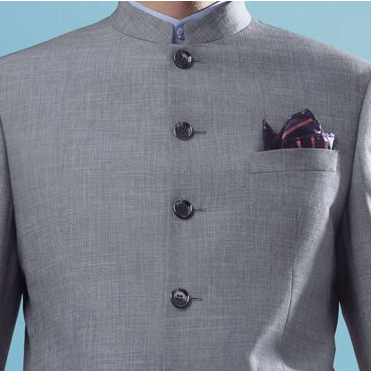The meaning of Zhongshan buttons
Chinese Tunic Buttons Deduct Three People's Principles
There is a difference in the methods used for the tunic. One of the arguments is that Mr. Sun Yat-sen went to Hanoi in Vietnam in 1902 to organise the Sino-Vietnamese Club and even entered the western-style clothes shop opened by the Guangdong native Huang Longsheng to teach foreigners to save foreign exchange and reflect the Chinese national conditions. Long Sheng designed a beautiful, simple and practical Chinese clothing, Huang referenced Western European and Japanese clothing style, and combined with the popular "Nanling" jacket and student clothes in Nanyang overseas Chinese.
When Mr. Zhongshan wears this tunic suit, he said: “This type of clothing is good-looking, practical, convenient, and saves money. Unlike suits, except for tops and shirts, they also need hard collars. These things are imported and costly. At the same time, the tunic was also given the political meaning that no clothing in history had ever had: four pockets, symbolizing the four dimensions of the country, namely rites, righteousness, honesty, and shame; five buttons, symbolizing the separation of the five powers of the Republic of China Political system, ie administrative power, legislative power, judicial power, examination power and supervision power. Three buttons on the cuffs represent the three people's principles of ethnicity, civil rights, and people's livelihood.
In April 1929, the 22nd State Council resolved the "Regulations on Civilian Uniforms and Dresses": "Uniforms are in tunic suits." In this regard, Zhongshang was officially declared a uniform by the Nationalist Government.

Want to learn more about buttons: accessible
Textile Fabric,Traditional Fabric,Kashmir Fabric,Classical Fabric
Wujiang wanwangTextile Co.Ltd , https://www.viscose-fabric.com